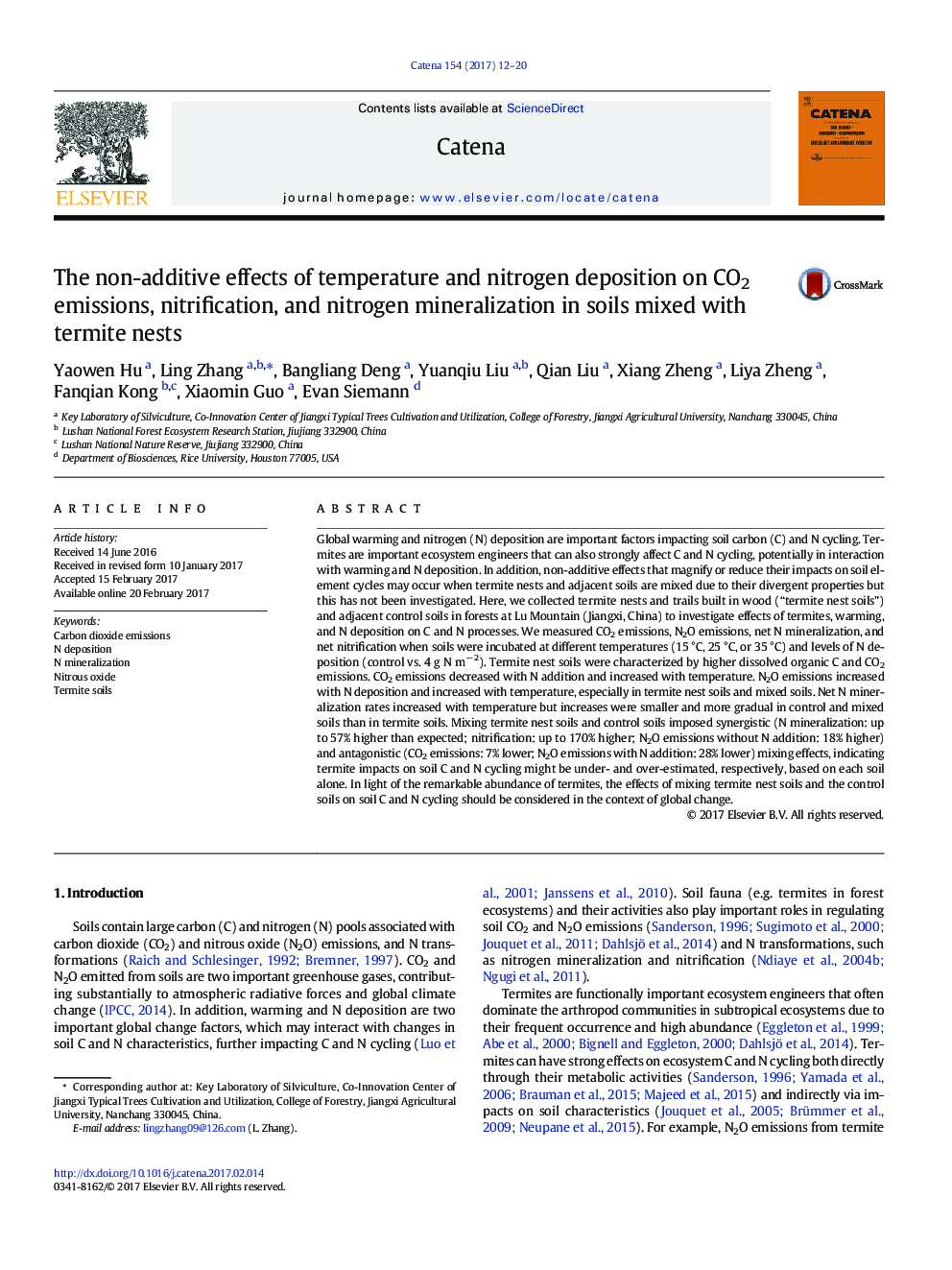| کد مقاله | کد نشریه | سال انتشار | مقاله انگلیسی | نسخه تمام متن |
|---|---|---|---|---|
| 5769927 | 1629200 | 2017 | 9 صفحه PDF | دانلود رایگان |

- Warming increased N mineralization more in termite nests than other soils.
- Termite nests were characterized by high dissolved organic C and CO2 emissions.
- Nitrification and N mineralization were higher in mixes of nests and control soils.
- Mixes of termite nests and control soils were characterized by low CO2 emissions.
- Soil mixing effects on N2O emission rates depended on N deposition rate.
Global warming and nitrogen (N) deposition are important factors impacting soil carbon (C) and N cycling. Termites are important ecosystem engineers that can also strongly affect C and N cycling, potentially in interaction with warming and N deposition. In addition, non-additive effects that magnify or reduce their impacts on soil element cycles may occur when termite nests and adjacent soils are mixed due to their divergent properties but this has not been investigated. Here, we collected termite nests and trails built in wood (“termite nest soils”) and adjacent control soils in forests at Lu Mountain (Jiangxi, China) to investigate effects of termites, warming, and N deposition on C and N processes. We measured CO2 emissions, N2O emissions, net N mineralization, and net nitrification when soils were incubated at different temperatures (15 °C, 25 °C, or 35 °C) and levels of N deposition (control vs. 4 g N mâ 2). Termite nest soils were characterized by higher dissolved organic C and CO2 emissions. CO2 emissions decreased with N addition and increased with temperature. N2O emissions increased with N deposition and increased with temperature, especially in termite nest soils and mixed soils. Net N mineralization rates increased with temperature but increases were smaller and more gradual in control and mixed soils than in termite soils. Mixing termite nest soils and control soils imposed synergistic (N mineralization: up to 57% higher than expected; nitrification: up to 170% higher; N2O emissions without N addition: 18% higher) and antagonistic (CO2 emissions: 7% lower; N2O emissions with N addition: 28% lower) mixing effects, indicating termite impacts on soil C and N cycling might be under- and over-estimated, respectively, based on each soil alone. In light of the remarkable abundance of termites, the effects of mixing termite nest soils and the control soils on soil C and N cycling should be considered in the context of global change.
Journal: CATENA - Volume 154, July 2017, Pages 12-20